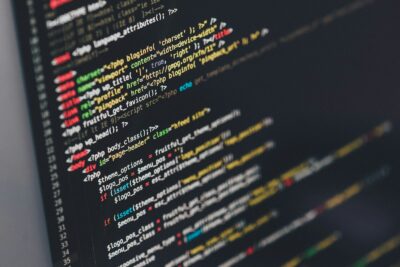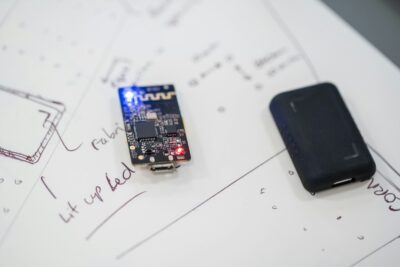The Power of Collaboration for Community Resilience
The Role of Technology Companies in Community Resilience
The collaboration between technology companies, community organizations, and government agencies is a key driver of innovation in community resilience technology. In rapidly developing regions such as Saudi Arabia and the UAE, this triad partnership is essential for creating robust systems that enhance community preparedness and response to disasters. Technology companies bring their expertise in cutting-edge technologies, such as artificial intelligence (AI), blockchain, and the Internet of Things (IoT), to develop innovative solutions that address the unique challenges faced by communities.
For instance, in cities like Riyadh and Dubai, technology firms are at the forefront of developing smart city initiatives that incorporate resilience measures. These initiatives leverage AI and IoT to create interconnected systems that can predict, monitor, and respond to emergencies in real time. By integrating these technologies into community infrastructure, technology companies help ensure that data is accurately collected, analyzed, and utilized to improve disaster preparedness and response.
Furthermore, the involvement of technology companies in community resilience projects fosters a culture of continuous innovation. These companies are constantly exploring new technologies and methodologies to enhance resilience. Their collaboration with community organizations and government agencies ensures that these innovations are not only technologically advanced but also practical and tailored to the specific needs of the community. This synergy between technology and community resilience creates a dynamic environment where innovative solutions can thrive and make a real impact.
Community Organizations: Bridging the Gap
Community organizations play a crucial role in the collaboration for community resilience technology by bridging the gap between technology providers and the community. These organizations have a deep understanding of the local context and the specific needs and vulnerabilities of the communities they serve. Their involvement ensures that the technological solutions developed are relevant, accessible, and effective in enhancing community resilience.
In the UAE and Saudi Arabia, community organizations work closely with technology companies to identify the most pressing resilience challenges and co-create solutions that address these issues. For example, in Dubai, community organizations have partnered with tech firms to develop mobile applications that facilitate real-time communication and coordination during emergencies. These apps provide residents with critical information, such as evacuation routes and emergency contacts, enhancing their ability to respond effectively to disasters.
Moreover, community organizations act as advocates for the communities they serve, ensuring that their voices are heard in the development of resilience technologies. By participating in the design and implementation processes, these organizations help to ensure that the technologies are user-friendly and culturally appropriate. This participatory approach not only increases the likelihood of successful adoption but also empowers communities to take an active role in their resilience efforts.
Government Agencies: Enabling Innovation and Implementation
Government agencies are vital partners in the collaboration for community resilience technology, providing the regulatory framework and resources necessary for the development and implementation of innovative solutions. In regions like Saudi Arabia and the UAE, where government support for technological advancement is strong, these agencies play a pivotal role in fostering an environment conducive to innovation and resilience.
In Riyadh, for example, government agencies have launched initiatives to support the integration of AI and blockchain technologies into disaster management systems. These initiatives provide funding, technical support, and policy guidance to technology companies and community organizations, enabling them to develop and implement cutting-edge resilience technologies. By creating a supportive regulatory environment, government agencies help to remove barriers to innovation and facilitate the adoption of new technologies.
Additionally, government agencies are responsible for coordinating the various stakeholders involved in community resilience efforts. They ensure that the collaboration between technology companies, community organizations, and other partners is effective and aligned with national resilience goals. This coordination is crucial for creating a cohesive and comprehensive resilience strategy that leverages the strengths of each stakeholder.
The Future of Community Resilience Technology
As technology continues to evolve, the collaboration between technology companies, community organizations, and government agencies will become increasingly important for driving innovation in community resilience technology. The integration of emerging technologies, such as generative AI and the metaverse, has the potential to revolutionize resilience efforts, offering new tools and capabilities for preparedness and response.
Generative AI, for instance, can be used to simulate various disaster scenarios, providing valuable insights into potential impacts and response strategies. These simulations can help communities better prepare for emergencies by identifying vulnerabilities and testing the effectiveness of different resilience measures. Similarly, the metaverse offers a virtual platform for training and education, allowing communities to engage in immersive and interactive resilience exercises.
In the UAE and Saudi Arabia, where there is a strong focus on technological advancement, the continued collaboration between technology companies, community organizations, and government agencies will be key to harnessing these new technologies for resilience. By working together, these stakeholders can develop innovative solutions that enhance community preparedness, response, and recovery, ensuring that communities are better equipped to withstand and recover from disasters.
Conclusion: Strengthening Community Resilience Through Collaboration
In conclusion, the collaboration between technology companies, community organizations, and government agencies is essential for driving innovation in community resilience technology. This partnership leverages the unique strengths and expertise of each stakeholder, creating a dynamic and effective approach to resilience. In regions like Saudi Arabia and the UAE, where technological advancement is a priority, this collaboration is particularly important for developing robust systems that enhance community preparedness and response.
For business executives and leaders, investing in collaborative resilience projects is not just about leveraging technology but also about building stronger, more resilient communities. By supporting the development and implementation of innovative resilience technologies, businesses can contribute to the overall well-being and security of the communities they serve. This commitment to resilience and innovation is essential for long-term success and sustainability.
As technology continues to advance, the potential for innovation in community resilience will only grow. By fostering collaboration and leveraging new technologies, stakeholders can develop and implement solutions that enhance community preparedness and response. In doing so, they can create a more resilient future for all.
#Collaboration #CommunityResilience #Innovation #UAETechnology #SaudiArabiaTech #RiyadhTech #DubaiAI #BusinessLeadership #ModernTechnology #AI























